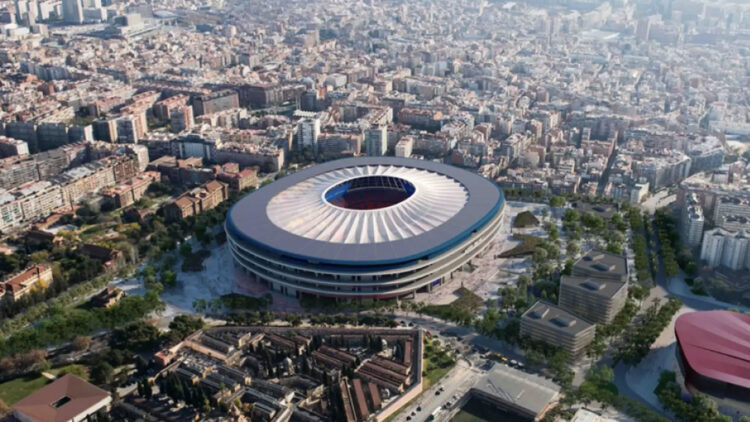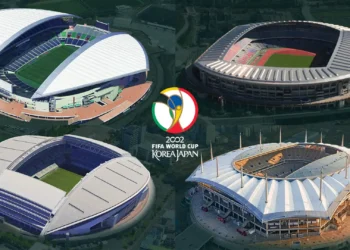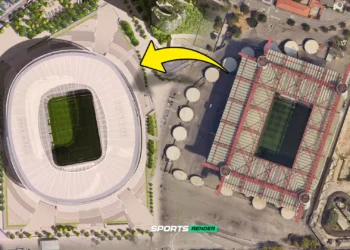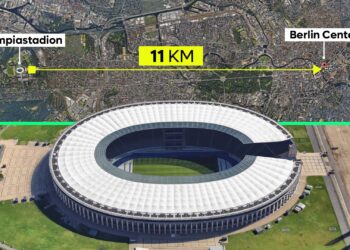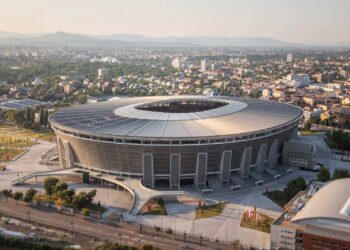In today’s post we will be covering the 15 biggest stadiums of the world, not only giving you their capacity but also their respective location, opening year and construction cost.
15. Stade France
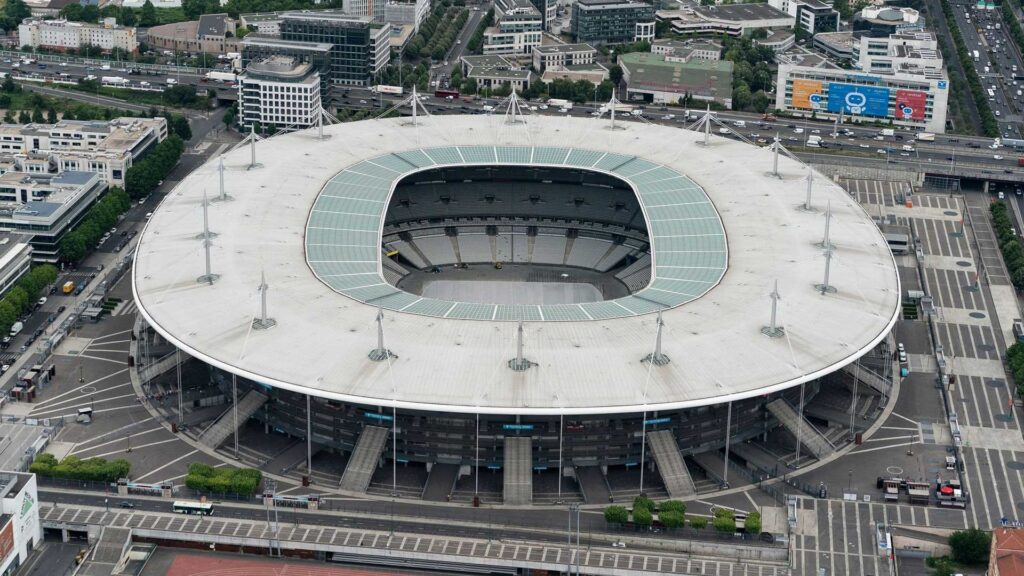
Location: Saint-Denis, France
Opened: 1998
Seating Capacity: 81,338
Construction Cost: €364m
The Stade de France, which was built in preparation for the 1998 FIFA World Cup, hosted the tournament’s opening and final games. It has also held four UEFA Champions League finals (2000, 2006, and 2022), three Rugby World Cups (1999, 2007, and 2023), and will hold athletics at the 2024 Summer Olympics.
The Stade de France has a moveable stand that reveals an athletics track without interfering with the spectator experience during football games, when fans want to be closer to the action.
Despite its obvious importance as a football stadium, no professional club plays their home games here frequently. Paris Saint-Germain declined the possibility to do so during its development in 1998. PSG has instead remained in Parc des Princes.
Stade France is now recognized as France’s national stadium, and in addition to hosting the Champions League finals, the site also hosts athletics, rugby, and concerts. Stade France has a seating capacity of 80,000 and was built in nearly three years, from June 2, 1995 to January 28, 1998. Additionally, Stade France was designed by Michel Macary, Michel Regembal, and Aymeric Zublena.
14. Signal Iduna Park
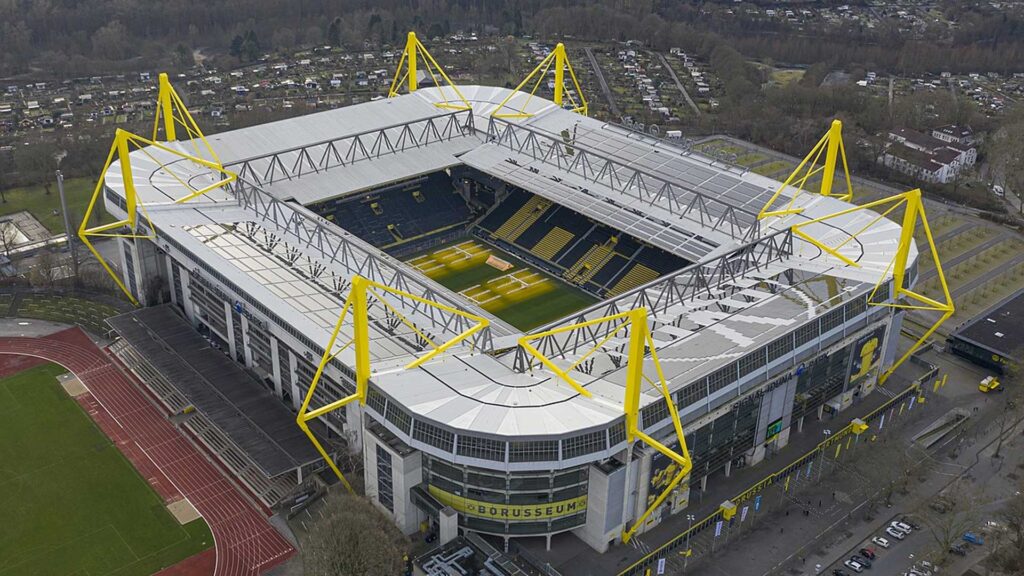
Location: Dortmund, Germany
Opened: 1974
Seating Capacity: 81,365
Construction Cost: €200 million in 2006
Signal Iduna Park, which was built in 1974 to serve as one of the stadiums for the 1974 World Cup, has since established a name for itself. The stands are quite near to the ground, and they provide an intimidating atmosphere for visiting teams and spectators. The stadium also has the largest free-standing stand in Europe, with a capacity of 25,000 people. This stand is also known as the ‘Yellow Wall’.
Unlike other stadiums in Europe, which have eliminated standing areas, Signal Iduna Park still allows supporters to purchase stand-only tickets. The stadium has undergone various changes throughout the years, reducing its initial capacity. Standing places have been decreased in favor of seated rows. Signal Iduna Park, one of Europe’s largest stadiums, hosted multiple World Cup games in 1974 and 2006.
And, to be honest, it’s really great that the stadium also hosts such a prominent and successful team as Borussia Dortmund. So, while this is somewhat lower on our list, the presence of standing supporters provides a distinct atmosphere – and we hope this continues in the future.
13. Jakarta International Stadium
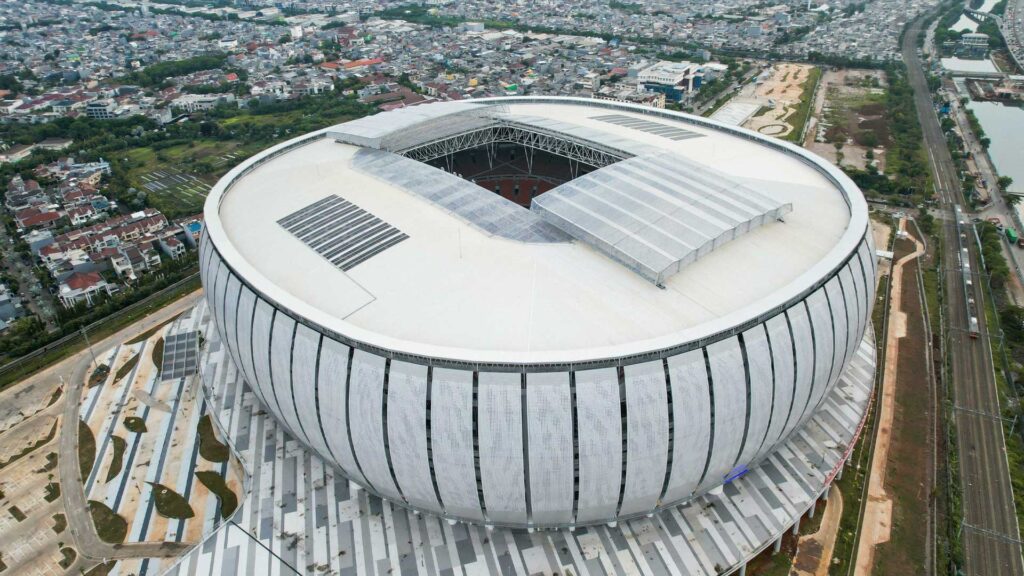
Location: North Jakarta, Indonesia
Opened: 2022
Seating Capacity: 82,000
Construction Cost: $312m
This 82,000-capacity stadium, home of Persija Jakarta and the semi-regular home of Indonesia’s national team, is Asia’s largest football-specific venue.
Furthermore, it is the world’s largest football stadium with a retractable roof, as well as the second largest stadium of any sort with a retractable roof, behind only the Texas AT&T Stadium.
The stadium held 16 matches at the 2023 FIFA U17 World Cup.
12. Estadio Santiago Bernabeu
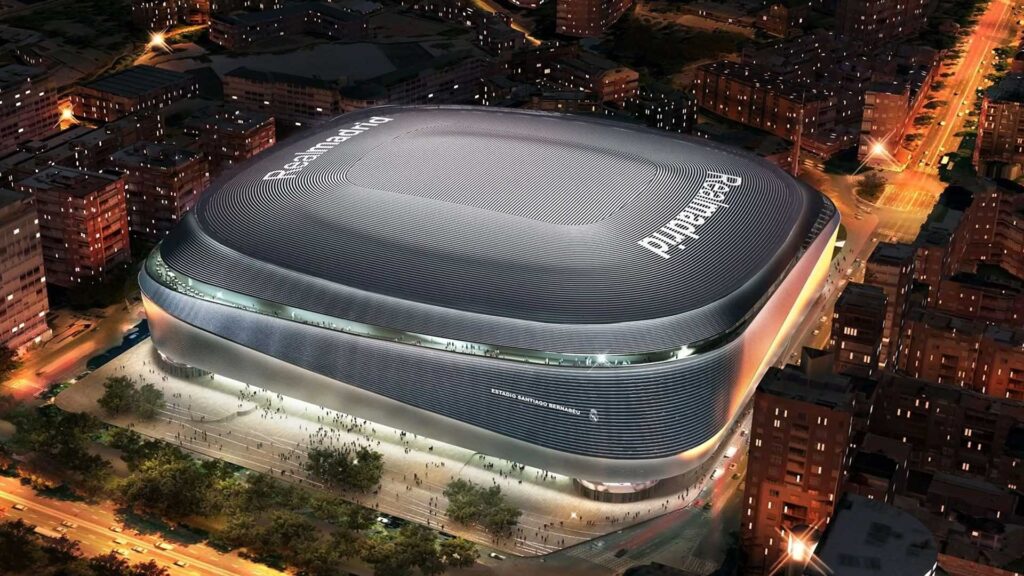
Location: 1947
Opened: Madrid, Spain
Seating Capacity: 83,186
Construction Cost: €1.7 million (but recent renovation costs have soared to $1.5bn)
Another stadium that has recently undergone considerable renovations is Real Madrid’s home, which remains intimidating in size and look but now features a spaceship-style facade.
The Bernabeu, named for a former club president, has held four European Cup/UEFA Champions League finals (1957, 1969, 1980, and 2010), the 2018 Copa Libertadores final, the 1964 European Championship final, and the 1984 World Cup final.
The Bernabeu, Spain’s second-largest stadium, has hosted Real Madrid games since 1947.
Furthermore, Los Blancos’ home stadium ranks high among locations that have held UEFA Champions League stadia. A match at the Santiago Bernabeu always seems unique, particularly on UCL and El-Classico evenings.
11. Estadio Monumental Antonio Vespucio Liberti
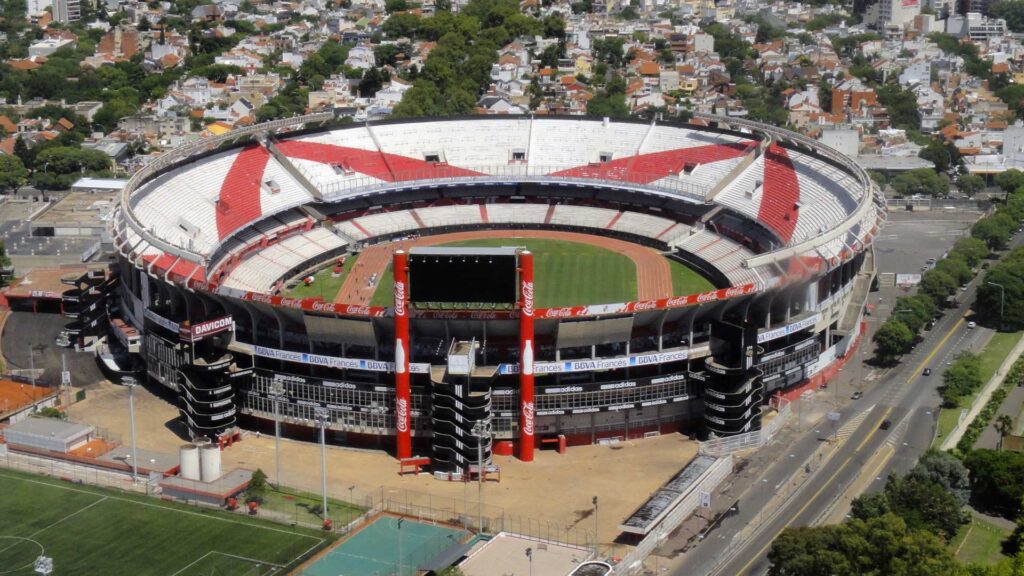
Location: Buenos Aires, Argentina
Opened: 1938
Seating Capacity: 83,198
Construction Cost: $3m (initial construction, several renovations since)
El Monumental, the renowned home of Argentine giants River Plate, has hosted the 1978 World Cup final as well as four Copa America finals, the most recent in 2011.
Recent renovations have eliminated the athletic track and increased capacity to more over 83,000. When the work is complete, the capacity will be 84,567. That work should be completed in 2024.
10. Stadium Australia
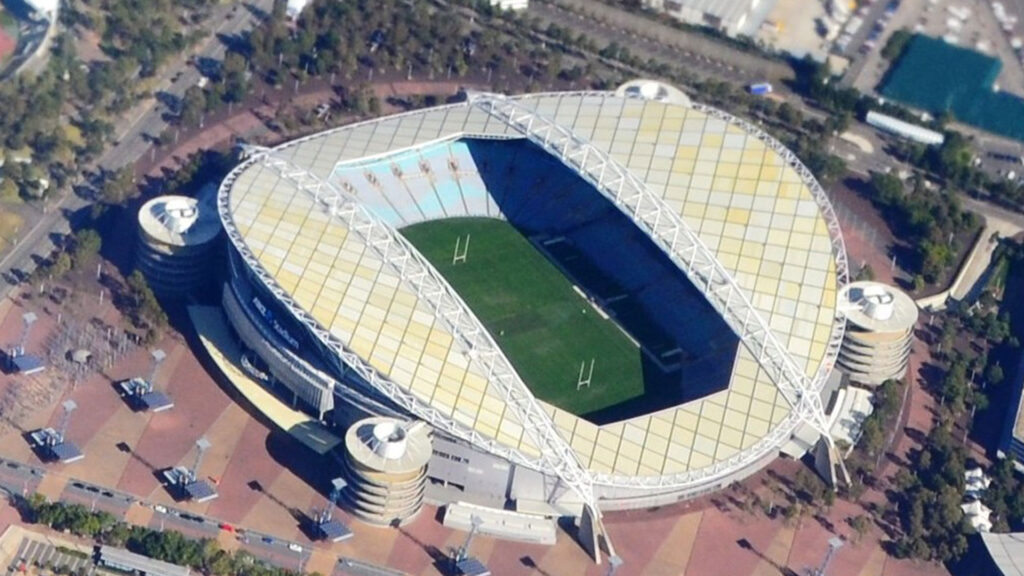
Location: Sydney, Australia
Opened: 1999
Seating Capacity: 83,500
Construction Cost: A$690m
Stadium Australia, currently known as the Accor Stadium due to sponsorship, was erected in preparation for the 2000 Sydney Olympics. It debuted in March 1999 with a rugby league doubleheader that drew 104,583 fans. Following the Olympics, the stadium was remodeled, lowering its capacity to 80,000.
This is Australia’s largest’soccer’ stadium, and it hosts important matches for the Socceroos, Australia’s national football team. Furthermore, Sydney FC has played many games at the stadium, most of which were exhibition matches against international opponents. The A-League All-Stars did the same.
Stadium Australia will host five FIFA Women’s World Cup matches in 2023, including the opening and final games.
The stadium is a multi-sports facility that also holds rugby league, rugby union, cricket, Australian rules football, motorsports, American football, and music concerts. The Bee Gees were the first to perform, followed by AC/DC, U2, Bon Jovi, Eminem, Taylor Swift, Guns N’ Roses, Adele, Justin Bieber, the Foo Fighters, Ed Sheeran, Red Hot Chili Peppers, Harry Styles, and The Weekend. Coldplay is slated to perform here in 2024.
9. Borg El-Arab Stadium
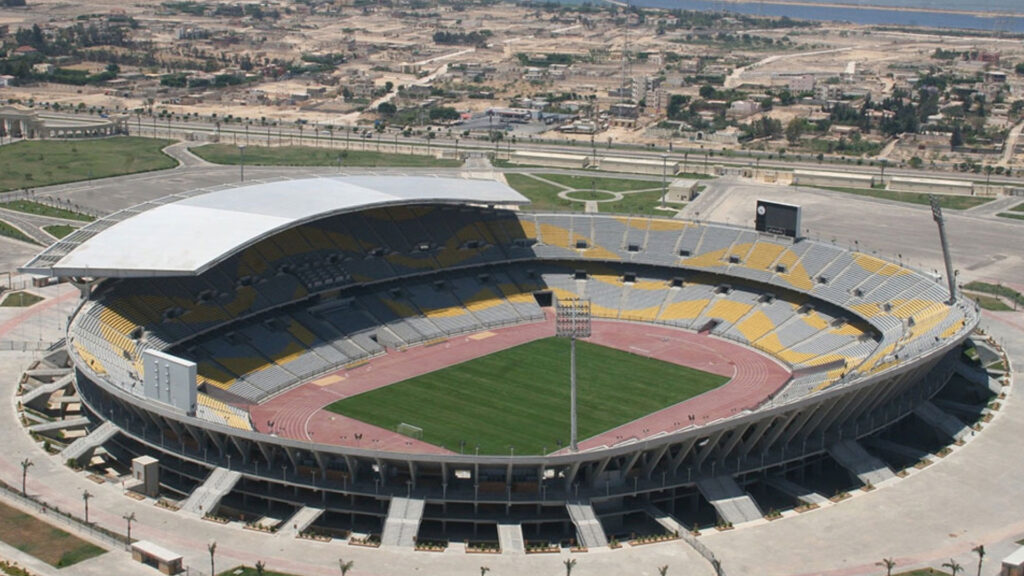
Location: Borg El Arab, Egypt
Opened: 2009
Seating Capacity: 86,000
Construction Cost: €200 million in 2006
This is the African continent’s third largest stadium, trailing only the FNB Stadium in terms of overall capacity. It is also behind the New Administrative Capital Stadium, which has yet to host a game.
Until the latter is formally inaugurated, the Borg El-Arab Stadium has a capacity of 86,000, making it Egypt’s largest by a comfortable margin. Unlike many other stadiums of its sort, it has been air-conditioned in several locations, ensuring that the harsh weather conditions in this region of the world are well combated. The designers have worked tirelessly to ensure that the stadium provides every form of amenity, including two sub-stadiums with a capacity of 2,000 people.
The Egyptian national football team calls this stadium home. It just made history by hosting Egypt’s first World Cup qualification since 1990. Aside from a football surface, the Borg El-Arab Stadium has jogging tracks and other areas for Olympic Games sports.
You can picture the atmosphere at this stadium when players like Mo Salah take the field to represent the Egyptian national team. At full capacity, with over 85,000 spectators, it must be electric in there – but we assume the shaded seats are like gold dust given the heat in this area of the world.
8. Bukit Jalil National Stadium
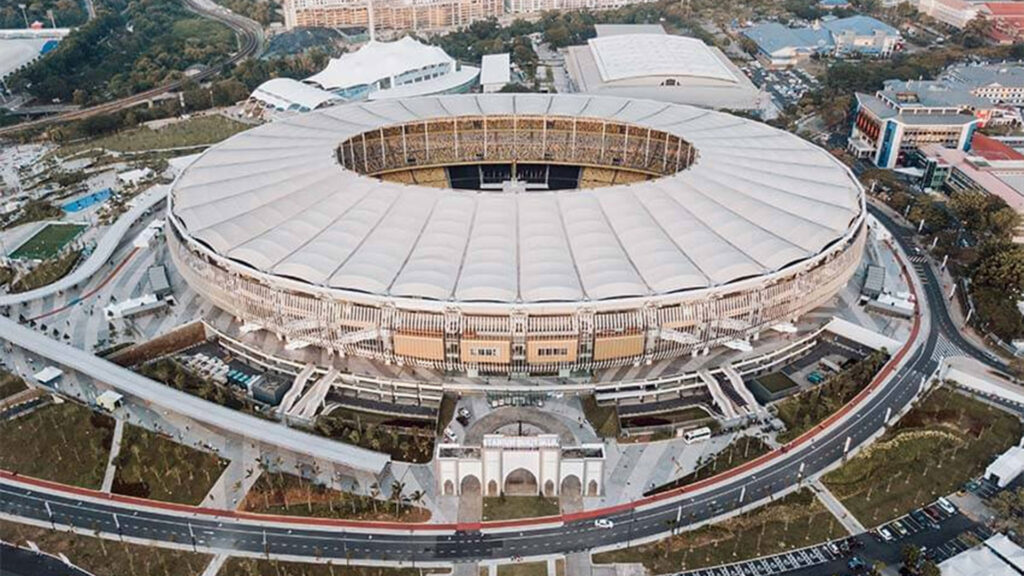
Location: Kuala Lumpur, Malaysia
Opened: 1998
Seating Capacity: 87,411
Construction Cost: RM800 million
The Malaysian national football team may not be ranked highly in FIFA, but it hasn’t stopped them from erecting one of the world’s largest football stadiums. The Bukit Jalil National Stadium, which cost RM800 million to build, is a colossus capable of seating around 87,000 people. It is the largest stadium of its type in Southeast Asia. As a result, it is not surprising that it has held a variety of events in addition to Malaysian national team matches.
The Bukit Jalil National Stadium has hosted a variety of events, including the Commonwealth Games and Southeast Asian Games. This multisport stadium has a roof and is mostly made of reinforced concrete.
Despite being relatively young, considerable renovations have already been completed, bringing much-needed improvements such as modern facilities and LED lighting. More elements, such as retractable seats, retractable roofs, and leisure amenities, are planned for the stadium as part of the next renovations.
As you can obviously notice from the photo, this stadium is also rather high, so with the retractable roof fully operational, it must be quite noisy, vivid, and exciting to play in. As previously said, Malaysia is not one of the most prominent FIFA teams, but given that this is one of the world’s largest stadiums, we assume it will be a challenge for visiting teams!
7. Estadio Azteca
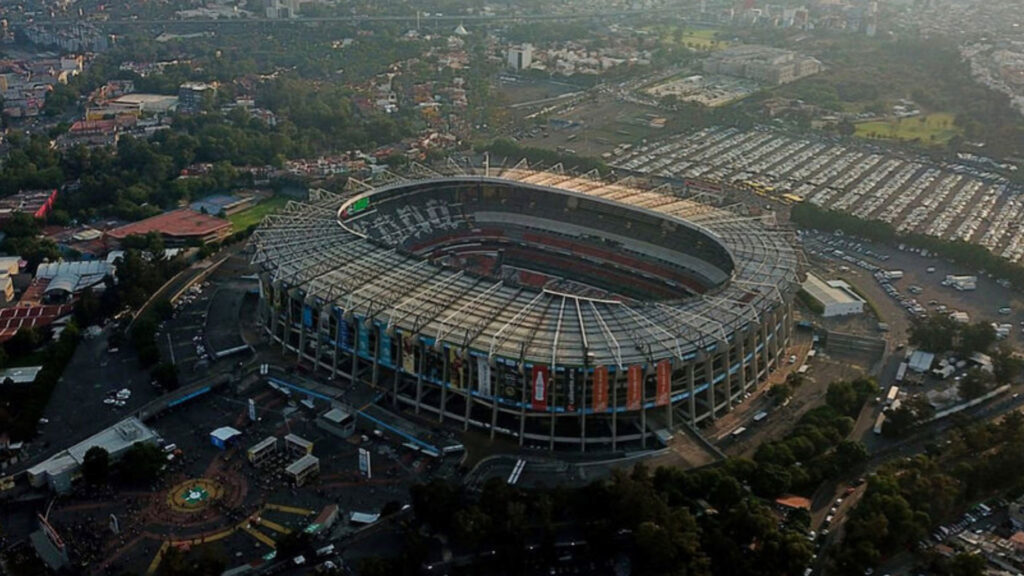
Location: Mexico City, Mexico
Opened: 1966
Seating Capacity: 87,525
Construction Cost: MXN$260 million
Estadio Azteca is also popularly considered as the venue for Italy’s 1970 game against West Germany. This game is recognized as the ‘Game of the Century’, with Italy winning 4-3 after extra time. Estadio Azteca can add additional feathers to its crown as it prepares to host World Cup games in 2026. In addition to the World Cup, the Estadio Azteca has previously hosted the Summer Olympics and the Women’s World Cup.
Even now, the stadium does not appear to have aged, since repeated renovations have introduced new amenities like as LED panels and expanded recreational spaces. The latest construction of executive boxes has decreased the capacity to 87,000.
If you were to visit any stadium in Mexico, this one would undoubtedly be at the top of the list, for all of the reasons indicated above. It’s a sort of a holy site for football in Mexico, and because it has held so many famous games in the past, the Estadio Azteca isn’t just one of the largest, but also one of the most iconic stadiums on this list.
6. Wembley Stadium
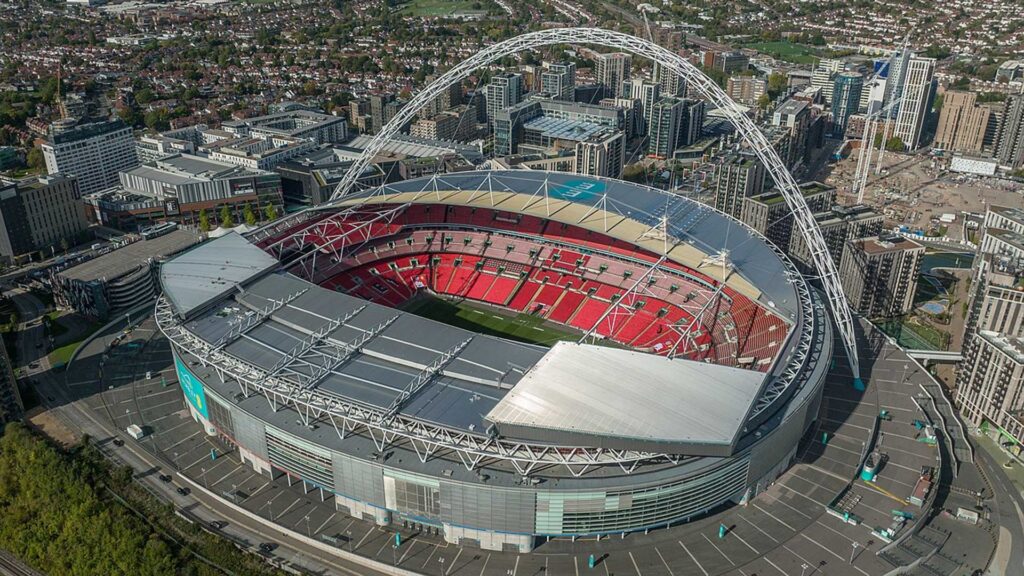
Location: London, England
Opened: 2007
Seating Capacity: 90,000
Construction Cost: £789 million in 2007
Wembley Stadium is a famous venue for football lovers in England. When the English Football Association chose to demolish the original Wembley Stadium, known as the Empire Stadium when it opened in 1923 and was considered as football’s home, in favour of a new stadium, there was a lot of criticism. This new stadium debuted in 2007 at a staggering cost of about £800 million. In today’s currency, this would be equivalent to £1.3 billion.
Despite the high expense, the new Wembley Stadium justified its reputation as a leading football destination. It is the home of the England national team and all domestic finals in English football, as well as high-profile music performances held beneath its distinctive arch.
The stadium seats 90,000 beneath a non-retractable roof, making it the biggest in its category. Wembley has also hosted a few of UEFA Champions League finals and the UEFA EURO 2020 final, in which Italy defeated hosts England.
5. Lusail Stadium
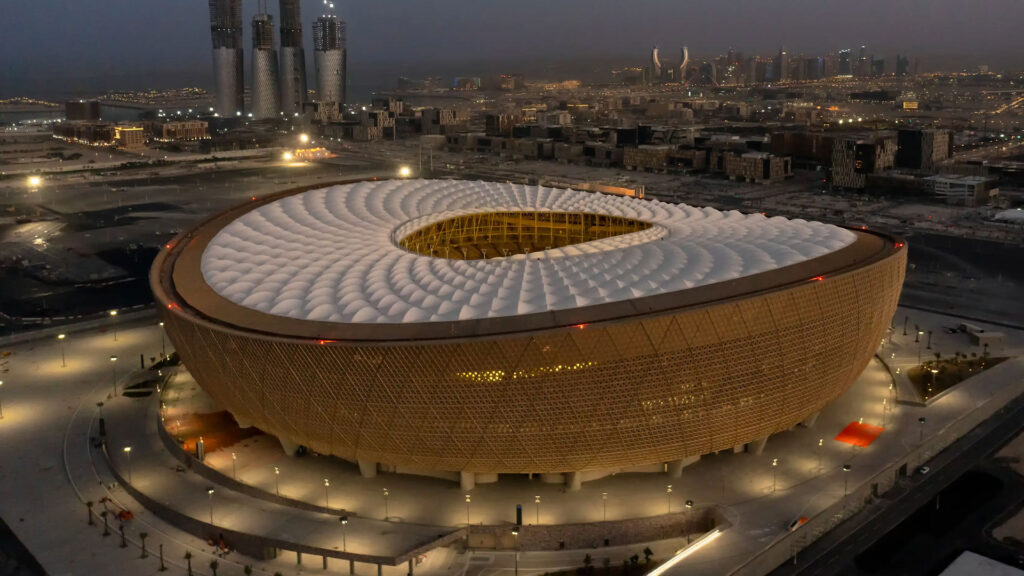
Location: Lusail, Qatar
Opened: 2021
Seating Capacity: 88,966
Construction Cost: Unknown
The Lusail Stadium hosted the 2022 World Cup final, six group stage games, and one fixture from each of the Round of 16, quarter-finals, and semi-finals.
Several media publications conducted investigations into the ground’s construction, alleging that hundreds of migrant laborers perished while working on World Cup sites in Qatar.
4. New Administrative Capital Stadium
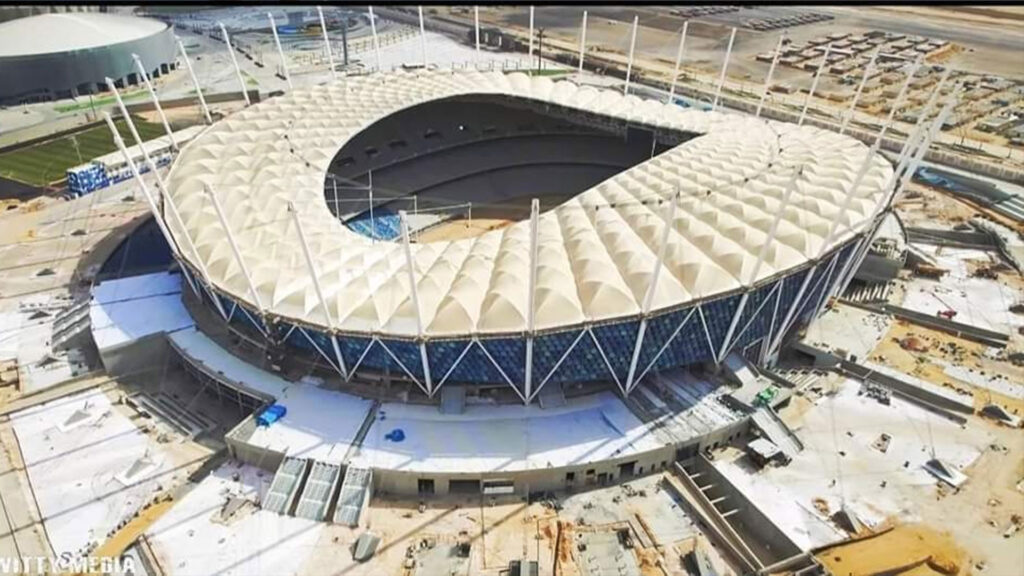
Location: New Administrative Capital, Egypt
Opened: 2019
Seating Capacity: 93,940
Italian architects SHESA Architects and MJW Structures designed the New Administrative Capital Stadium, which is expected to replace Egypt’s primary football stadium, the Cairo International Stadium (75,000). These businesses were also in charge of Turin’s Juventus Stadium and Cameroon’s Paul Biya Stadium.
While the name is uninteresting, the design is magnificent, inspired by the ancient Egyptian queen Nefertiti’s headdress.
The stadium will be located in the midst of a bigger sports complex that includes a training ground, indoor halls, and an Olympic swimming pool. The development of this stadium is part of Egypt’s bid to host the 2030 World Cup (which it has already obtained) and the 2036 Olympic Games.
3. FNB Stadium
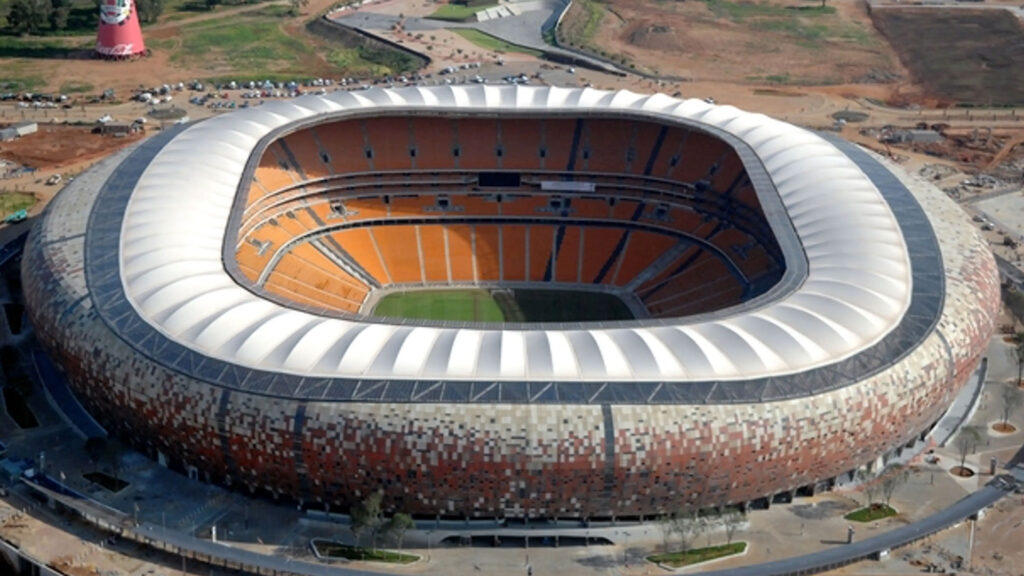
Location: Johannesburg, South Africa
Opened: 1989
Seating Capacity: 94,736
Construction Cost: $440 million
The stadium is also notable for hosting Nelson Mandela’s final public appearance. Even though the stadium has been around since 1987, the big remodeling work for the World Cup in 2010 resulted in numerous new amenities such as executive suites, a new roof, floodlights, and change rooms. Aside from hosting World Cup games, the FNB Stadium has excelled at hosting African Cup of Nations games. The FNB Stadium is also the most contemporary venue in this region of the world.
Coming in at number three, it’s evident that the FNB Stadium is one of the greatest around, but the sheer size and beauty aren’t the main attraction, in our opinion.
When you think back to the 2010 World Cup games played here, the atmosphere was electric, with the now-famous vuvuzela reverberating around the stadium.
2. Camp Nou
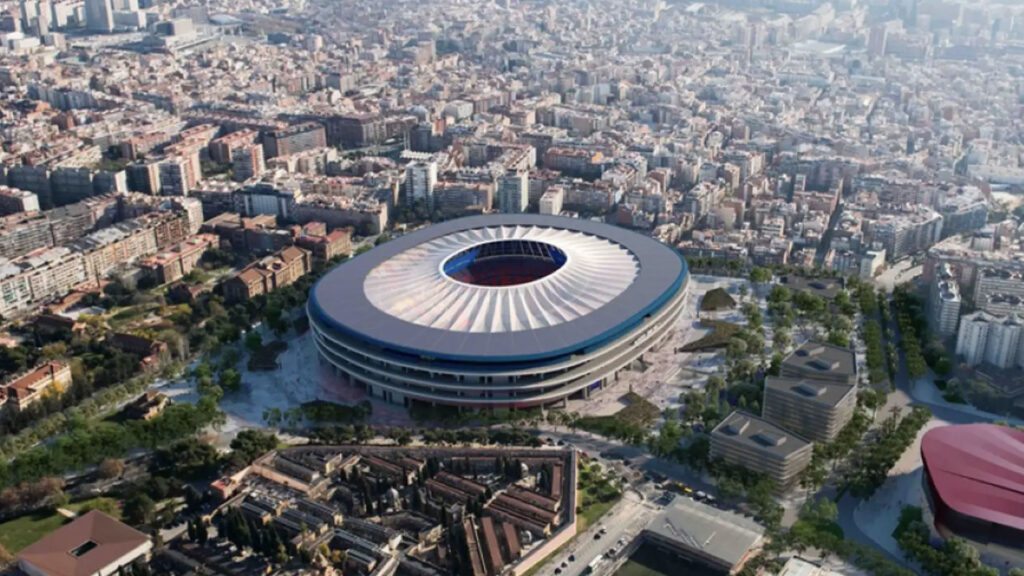
Location: Barcelona, Spain
Opened: 1957
Seating Capacity: 99,354
Construction Cost: €1.73 billion
The Camp Nou stadium, which hosts FC Barcelona, is one of the world’s largest. It is undoubtedly the largest in Spain, having a capacity of about 100,000. This is a remarkable achievement for an all-seater stadium. Over the years, the stadium has hosted every possible big tournament/game. It has hosted World Cup and EURO games, as well as UEFA Champions League finals and the Summer Olympics (Barcelona did so in 1992).
The landmark site, which has never had a roof and provides a wonderful view of the whole city, is currently receiving substantial restorations. FC Barcelona must now play somewhere else. When the renovations are finished, the Camp Nou will have a roof and a much higher capacity.
1. Rungrado 1st of May Stadium
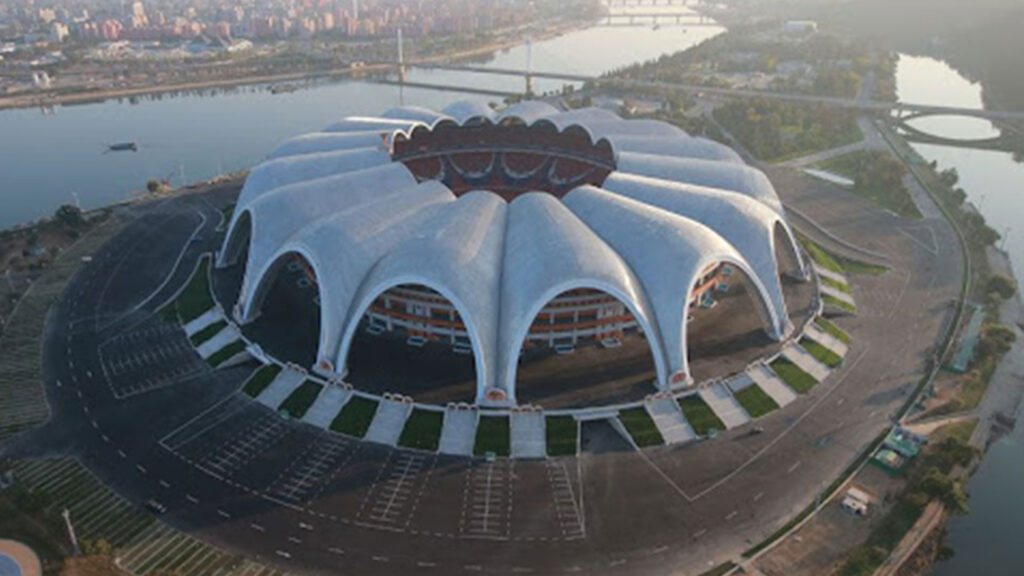
Location: Pyongyang, North Korea
Opened: 1989
Seating Capacity: 114,000
Construction Cost: Unknown
This land, which opened in 1989, is shrouded in mystery. It features a magnificent ceiling with 16 concrete arches resembling parachutes (though they were supposed to resemble lotus blossoms) with a massive capacity of at least 115,000. There are others who believe this is an overestimate of how many supporters can fit in.
It’s also astonishing that the world’s largest stadium was erected in reaction to neighbouring South Korea’s construction of the Seoul Olympic Stadium. North Korea wanted to make a statement, so they did. It is unclear how much it cost them.
The ground is located on Rungra Island, stands eight floors tall, and occupies 207,000 square meters. Its name is taken from its debut date, May Day 1989.

